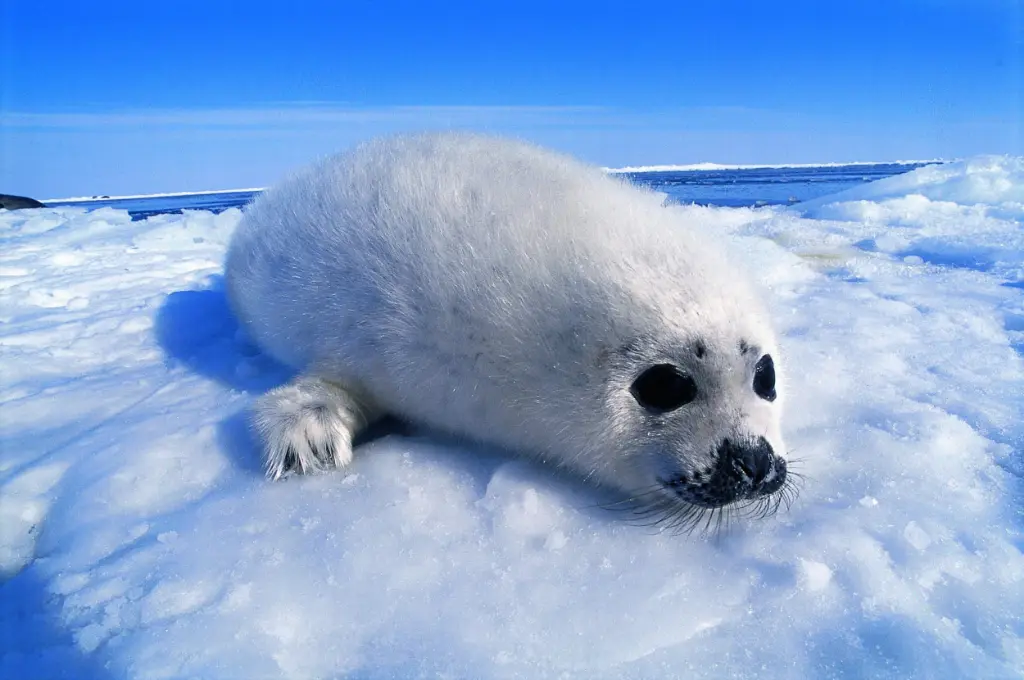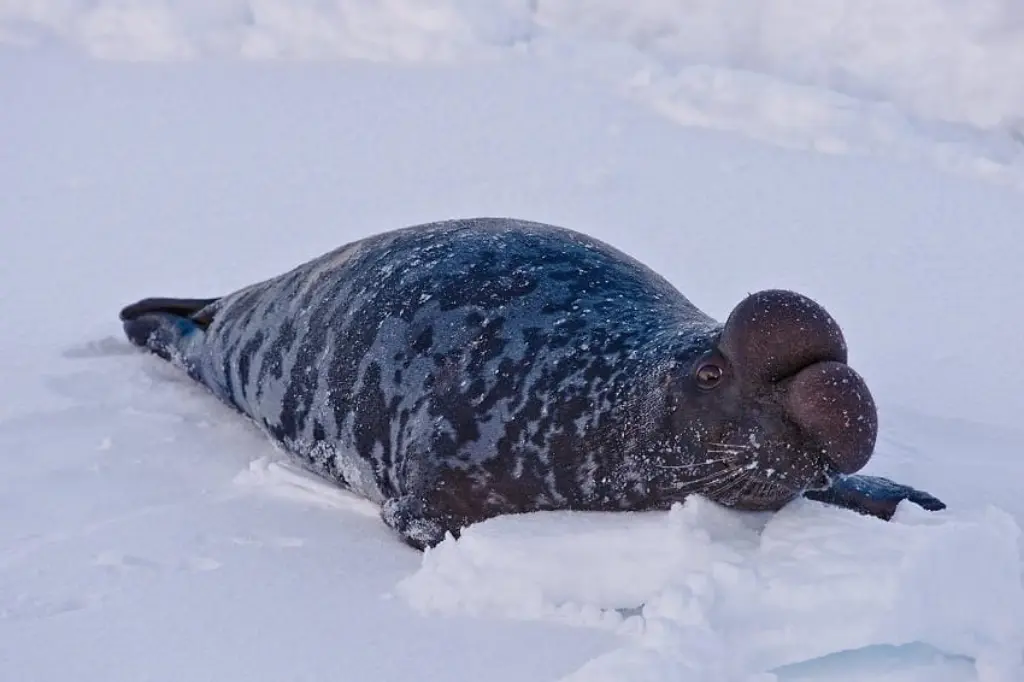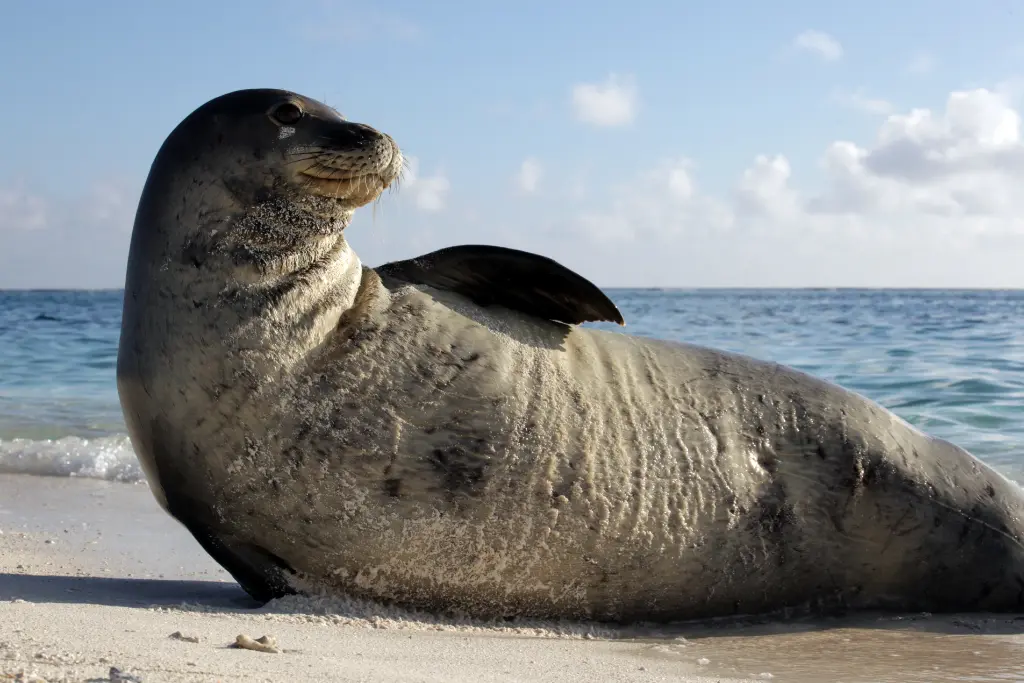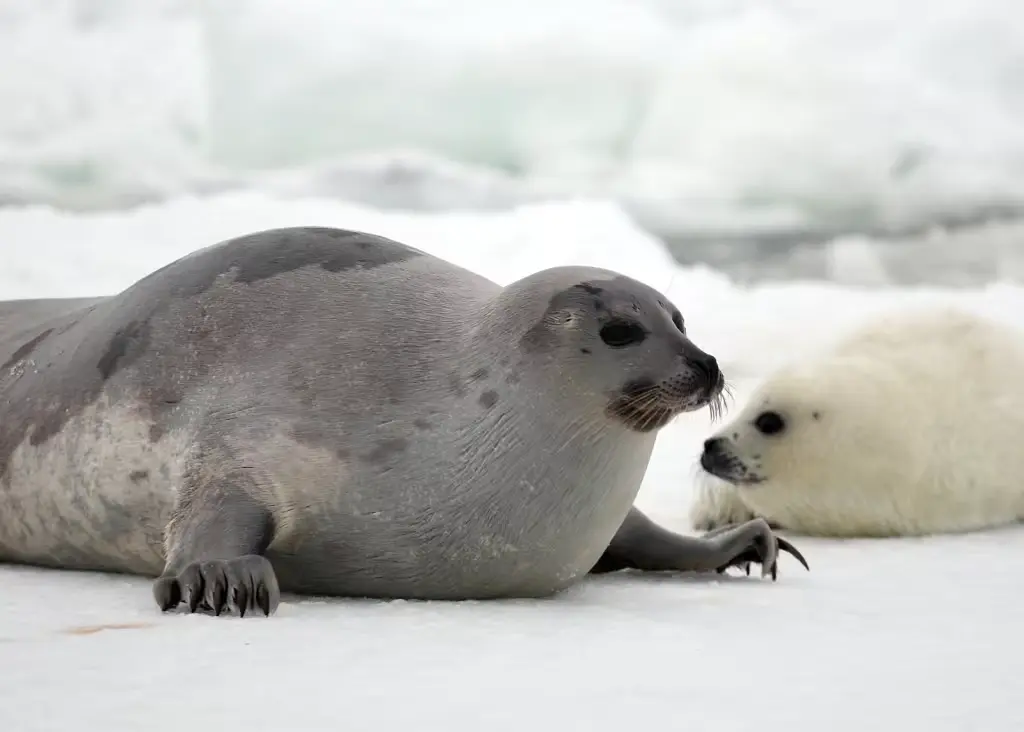Welcome! This article aims to provide you with a clear and concise understanding of the Pagophilus genus, which includes the important and fascinating Harp Seal. We’ll cover their characteristics, habitat, behavior, and conservation status in a way that’s easy to grasp. So, let’s dive in!
What Exactly is a Pagophilus?
Pagophilus is a genus within the Phocidae family – the true seals. Currently, the genus Pagophilus contains only one recognized species: the Harp Seal (Pagophilus groenlandicus). The name itself gives a hint about its lifestyle; “Pagophilus” translates to “ice lover.”
The Harp Seal: A Lone Star
The Harp Seal is the sole representative of the Pagophilus genus. It’s a medium-sized seal known for its distinctive saddle-shaped markings in adulthood. Understanding the Harp Seal means understanding the essence of Pagophilus.

A Harp Seal pup on an ice floe.
Identifying the Harp Seal: Key Characteristics
Identifying the Harp Seal is relatively straightforward. Here are the key characteristics:
- Size and Weight: Adults typically measure between 1.7 to 2.0 meters (5.6 to 6.6 feet) in length and weigh between 115 to 140 kilograms (250 to 300 pounds).
- Coloration: The coloration changes dramatically throughout their lives. Pups are born with fluffy white fur (lanugo), which they shed after a few weeks. Juveniles have a mottled grey coat. Adults develop a silver-grey body with a black harp-shaped pattern on their back – hence the name “Harp Seal.”
- Head Shape: They have a relatively small, rounded head with a short snout.
- Flippers: Their flippers are relatively short and strong, allowing for efficient swimming and maneuvering in icy waters.
Habitat and Distribution of Pagophilus groenlandicus
Harp Seals are truly creatures of the Arctic. Their distribution is closely tied to the presence of sea ice, which they rely on for breeding and molting. They are found primarily in three main populations:
- Northwest Atlantic: This is the largest population, breeding off the coasts of Newfoundland and Labrador in Canada, as well as in the Gulf of St. Lawrence.
- Greenland Sea: This population breeds near Jan Mayen Island and along the east coast of Greenland.
- White Sea: The smallest population breeds in the White Sea, located in northwestern Russia.
During the non-breeding season, Harp Seals migrate over vast distances, often traveling south as far as the northern coasts of the United States and Europe. These migrations are driven by the availability of food and suitable ice conditions.
Behavior and Ecology: How Harp Seals Live
Harp Seals are highly adapted to their harsh Arctic environment. Understanding their behavior and ecology is crucial for appreciating their resilience.
Social Structure and Breeding
Harp Seals are generally social animals, especially during the breeding season. They gather in large numbers on stable ice floes to give birth and mate. The breeding season typically occurs between late February and April, depending on the location of the population.
Females give birth to a single pup and nurse it for about 12 days. During this period, the pup gains a significant amount of weight thanks to the mother’s rich milk. After weaning, the pup is left to fend for itself, relying on its blubber reserves to survive until it learns to hunt.
Diet and Hunting
Harp Seals are opportunistic feeders, consuming a wide variety of prey depending on availability. Their diet primarily consists of fish, crustaceans, and cephalopods (such as squid and octopus). Common prey species include Arctic cod, capelin, herring, and various invertebrates.
They are skilled divers, capable of holding their breath for up to 15 minutes and diving to depths of over 400 meters (1,300 feet) in search of food. Their streamlined bodies and powerful flippers allow them to efficiently pursue prey in the water.
Threats and Predators
Despite their adaptations, Harp Seals face several threats, both natural and human-induced.
- Predators: Natural predators include polar bears, killer whales (orcas), and sharks. Polar bears are a major threat to both pups and adults, especially when ice conditions are unfavorable.
- Climate Change: The most significant threat to Harp Seals is climate change. The Arctic is warming at a much faster rate than the global average, leading to a decline in sea ice extent and thickness. This loss of sea ice directly impacts their breeding habitat and foraging opportunities.
- Hunting: Historically, commercial hunting of Harp Seals has been a major source of mortality. While hunting is now regulated in many areas, it still occurs in some regions.
- Entanglement: Harp Seals can become entangled in fishing gear, leading to injury or death.
- Pollution: Exposure to pollutants, such as heavy metals and persistent organic pollutants (POPs), can negatively impact their health and reproductive success.
Conservation Status and Efforts
The conservation status of the Harp Seal is currently listed as “Least Concern” by the International Union for Conservation of Nature (IUCN). However, this designation can be misleading, as the long-term outlook for the species is uncertain due to the impacts of climate change.
Several conservation efforts are underway to protect Harp Seals and their habitat:
- Monitoring Populations: Scientists regularly monitor Harp Seal populations to track their abundance and distribution.
- Regulating Hunting: Hunting quotas are established and enforced in many areas to ensure that harvest levels are sustainable.
- Protecting Habitat: Efforts are being made to protect critical breeding and foraging areas.
- Addressing Climate Change: Global efforts to reduce greenhouse gas emissions are crucial for mitigating the impacts of climate change on Harp Seals and other Arctic species.
- Reducing Pollution: Measures are being taken to reduce pollution in Arctic waters.
The Future of Pagophilus
The future of the Pagophilus genus, specifically the Harp Seal, hinges on our ability to address climate change. The continued loss of sea ice poses a significant threat to their survival. While hunting regulations and other conservation measures are important, they are not sufficient to overcome the challenges posed by a rapidly warming Arctic.
By understanding the biology, behavior, and threats facing Pagophilus groenlandicus, we can better appreciate the importance of protecting this iconic Arctic species and the fragile ecosystem it inhabits. Continued research, conservation efforts, and global action on climate change are essential to ensure that future generations can witness the beauty and resilience of the Harp Seal.
Conclusion
We’ve covered a lot of ground in this article, from defining the Pagophilus genus to understanding the challenges faced by the Harp Seal. Remember, the key takeaways are that Pagophilus essentially *is* the Harp Seal, and the future of this species depends heavily on our collective action to combat climate change. Thank you for reading!




